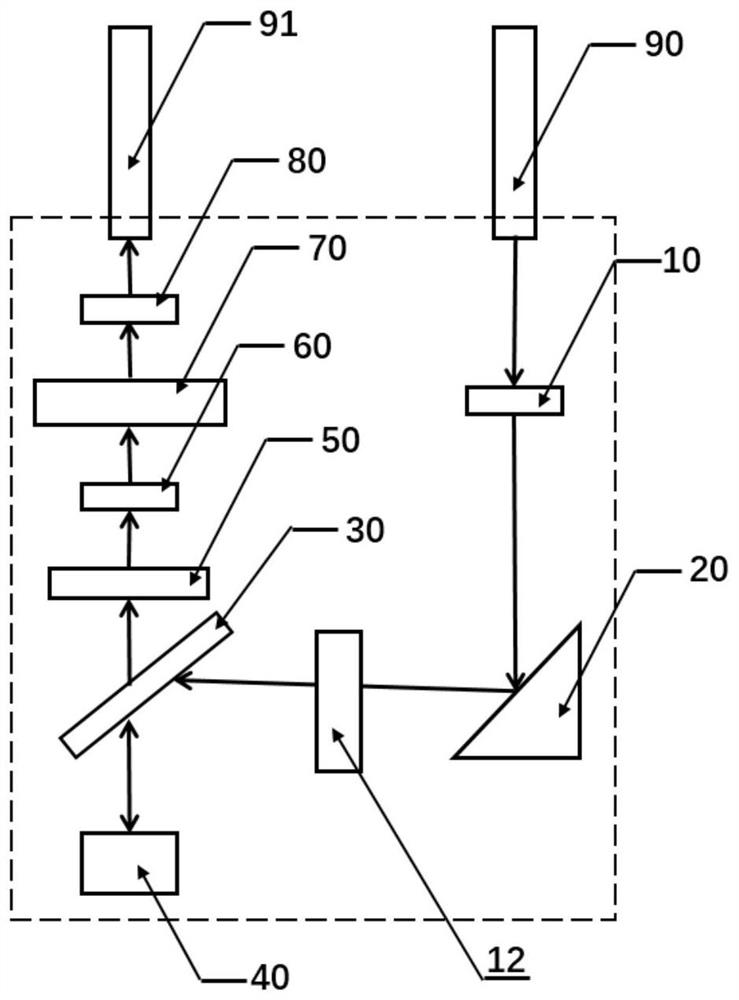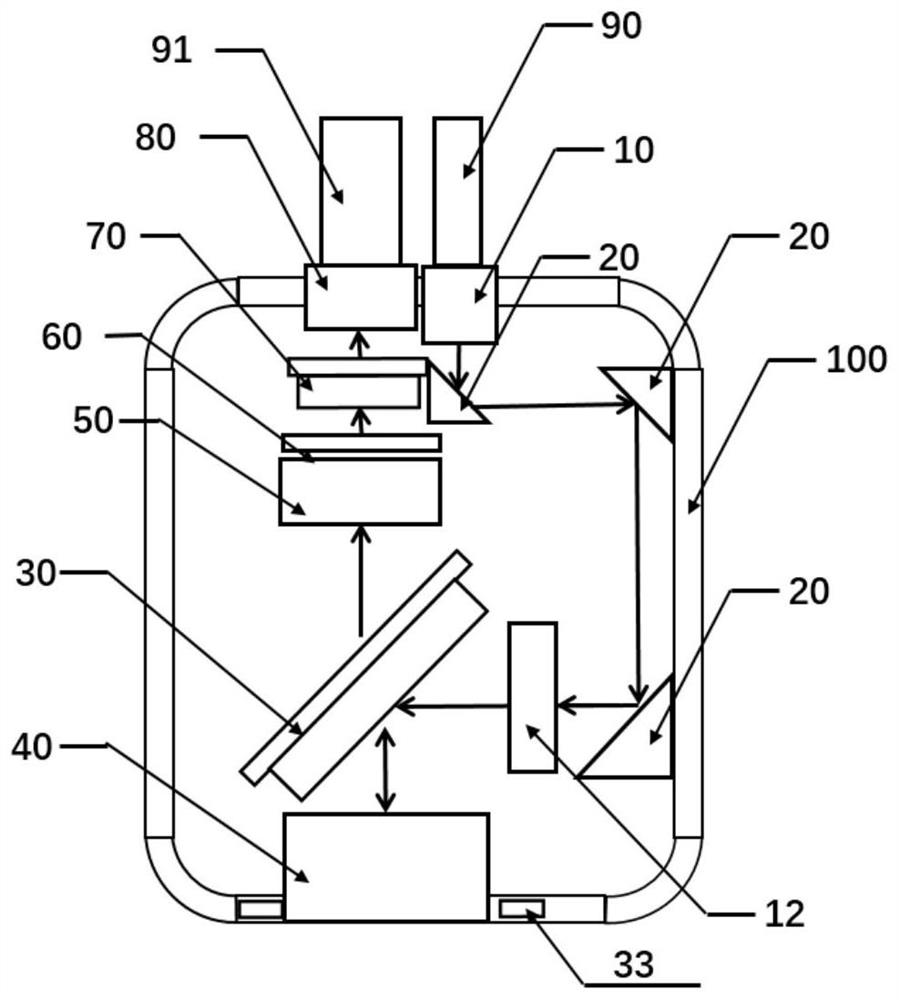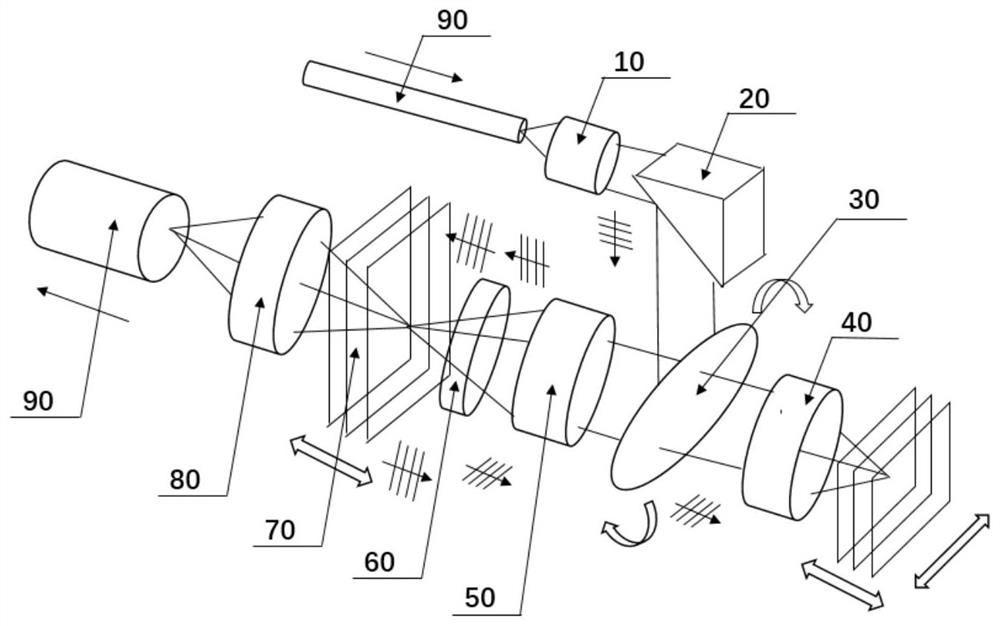Three-dimensional miniature endoscope
An endoscope and miniature technology, applied in the field of endoscope, can solve the problems such as hindering the use of endoscopes, large endoscopes, etc., and achieve the effects of reduced volume, large operating space, and small volume
- Summary
- Abstract
- Description
- Claims
- Application Information
AI Technical Summary
Problems solved by technology
Method used
Image
Examples
Embodiment 1
[0042] Embodiment 1 is basically as figure 1 , figure 2 and image 3 As shown in the figure, a three-dimensional miniature endoscope includes a miniature imaging probe, the miniature imaging probe is wrapped by a casing 100, and the miniature imaging probe includes in order according to the optical path: a collimating lens 10, a cylindrical lens 12, a reflecting mirror 20, a plane dichroic A mirror scanner 30, an objective lens 40, a focusing lens 50, a glass slide 60, a vertical dichroic mirror scanner 70, and a collection lens 80, wherein the objective lens 40 includes a front aperture for collecting fluorescent photons, the front aperture is vertically arranged and the lower end penetrates through the front aperture. After passing through the bottom of the housing 100, it can be directly opposite to the external sample.
[0043] The objective lens 40 is an aspherical lens, and the collimating lens 10 is used for collimating the laser light output from the laser input fib...
Embodiment 2
[0053] The difference between the second embodiment and the first embodiment is: as Image 6 As shown in the figure, the photosensitive unit of the photodetector 33 is composed of a circular array of two-dimensional pixel photoelectric sensors, such as CCD (Photo-Coupling Device) devices, CMOS (Metal Semiconductor Oxide) devices, FPA (Focal Plane Array) devices, PMT (Photoelectric A multiplier) device, a single photon counting device, or a hybrid device based on any of the above multiple photoelectric conversion principles, such as a Hamamatsu Hybrid Photodetector (HPD), a central hole or transparent material for excitation light transmitted through the objective lens 40, The annular array of two-dimensional pixel photosensors is used to receive fluorescent photons that are not received by the objective lens 40 .
Embodiment 3
[0055] The difference between the third embodiment and the first embodiment is that the filter 331, the photosensitive unit 332 and the driving unit 333 are protected by a protection element, and the protection element is made of a light-transmitting insulating material, such as optical glass. On the one hand, it can be used to isolate the external sample and the photodetector 33, and at the same time, it can also be used for electrical isolation. The protective element with a thickness of several hundreds of microns can withstand the high driving voltage of the avalanche diode, preventing the high voltage of the photosensitive unit 332 from being externally detected by personnel. cause danger.
PUM
 Login to View More
Login to View More Abstract
Description
Claims
Application Information
 Login to View More
Login to View More - R&D
- Intellectual Property
- Life Sciences
- Materials
- Tech Scout
- Unparalleled Data Quality
- Higher Quality Content
- 60% Fewer Hallucinations
Browse by: Latest US Patents, China's latest patents, Technical Efficacy Thesaurus, Application Domain, Technology Topic, Popular Technical Reports.
© 2025 PatSnap. All rights reserved.Legal|Privacy policy|Modern Slavery Act Transparency Statement|Sitemap|About US| Contact US: help@patsnap.com



